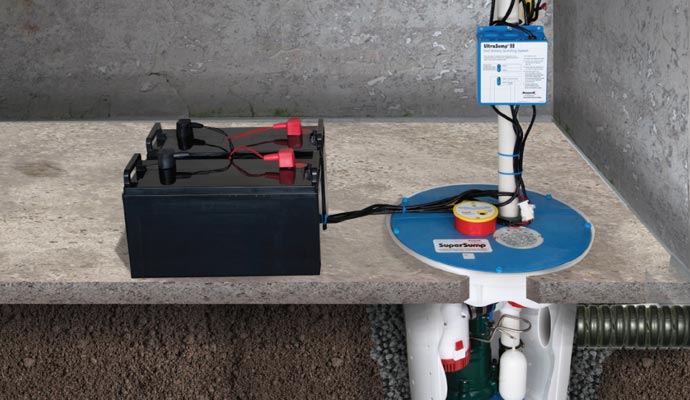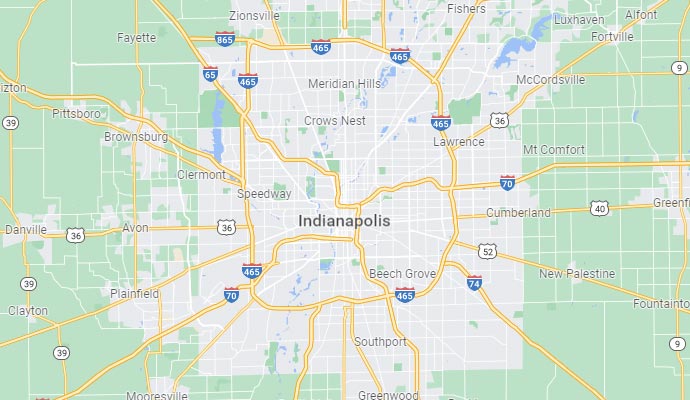Types of Foundation Cracks
Discovering a crack in the Indianapolis foundation of your home can be unsettling, as this could represent extensive damage to your home’s foundation, which could mean costly repairs.
However, if you have discovered a crack in your Indianapolis foundation you may be wondering if all Indianapolis foundation cracks are the same, or if certain cracks should be more cause for concern than others. The fact is that looking at the crack can tell you a lot about the damage to your Indianapolis foundation including what may have caused it and how severe the problem is. To help you get a better understanding of Indianapolis foundation damage, here is a quick overview of the most common types of Indianapolis foundation cracks.
VERTICAL CRACKS
Of the Indianapolis foundation cracks you are likely to encounter, vertical cracks are generally the most common and least severe type of crack you will come across. Vertical cracks are cracks that go straight up and down, or maybe on a slight diagonal of within 30 degrees of vertical, and are a common occurrence in many houses. These types of cracks are usually the result of your Indianapolis foundation settling, and it is thusly not uncommon even for new houses to have this type of Indianapolis foundation damage as a home’s Indianapolis foundation can settle greatly in the first few years. Fortunately, this type of crack is usually the easiest and least expensive to have sealed. Generally, a urethane or epoxy material will be injected into the crack, ensuring that it is sealed and does reopen or grow as your Indianapolis foundation continues to settle.
DIAGONAL CRACKS
Another common type of crack that you may encounter is a diagonal crack that runs along your Indianapolis foundation or Indianapolis basement wall at a 30-75 degree angle. This type of crack may be a thin hairline crack, but will likely be wider at one end than the other. Diagonal Indianapolis foundation cracks are caused by differential settling of a foundation, which is where one side of a home’s Indianapolis foundation settles lower than the rest of the foundation. This type of uneven tension then causes diagonal cracking. Differential settling can be the result of the house being built on a hill, or due to the expansion or contraction of the soil under a portion of the home. This type of crack can be more costly to repair than a vertical crack since it may be necessary to address the cause of the differential settlement after the crack is sealed. However, the solution may be as simple as installing new gutters so that rainwater directs away from a section of your properly that regularly becomes flooded, as this water could be causing the soil under a portion of your Indianapolis foundation to shift.
HORIZONTAL CRACKS
Foundation cracks that run sideways (horizontally) are the most serious type of crack to look out for, as they can signal serious damage to your home’s Indianapolis foundation and structural integrity. While these cracks are sometimes seen in homes with poured concrete foundations, they are most common in homes with concrete block or brick foundations. Several things can cause this type of Indianapolis foundation damage including soil pressure outside of your foundation, and hydrostatic pressure that can cause your Indianapolis basement walls to bow. If you discover this type of Indianapolis foundation damage it is important that you have it repaired as soon as possible before the structural integrity of your home becomes compromised. This type of cracking will require the most extensive repairs, which will likely include reinforcing your Indianapolis foundation in order to secure it and prevent further damage.
Knowing what types of cracking you may discover in your home can help you to determine the severity of the damage to your foundation. Ultimately, however, any cracks you discover in your home’s foundation should be taken seriously and professionally inspected and repaired so that you can ensure the structural integrity of your home. Contact us to learn more about what you need to know if you encounter cracks in your home’s foundation.
Details
Published: 05 February 2019

















